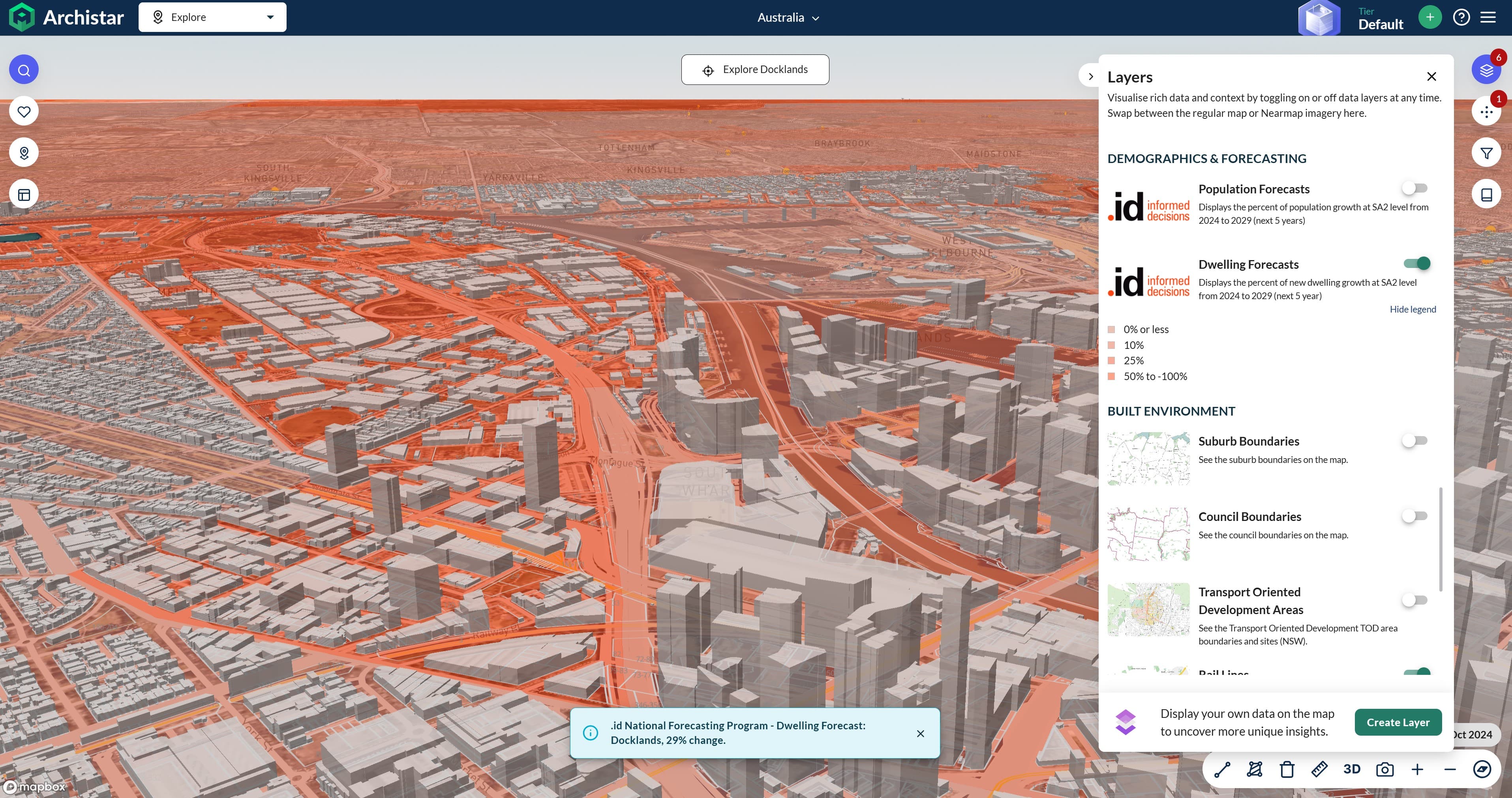You may have heard us talk about the ‘assumptions’ that go into developing population forecast information. When we forecast the future population of an area, we need to make assumptions about how big picture demographic trends (like overseas and interstate migration, fertility and life expectancy) and ground-level factors such as dwellings and residential development will affect the population over time. Trends often unfold in different ways in different locations, so we need to have a detailed understanding of how these trends affect places at a local level.
Forecasting residential growth
Infrastructure is a key factor we consider when developing population forecast information, as residential growth is influenced by elements such as the presence of utilities and transport connectivity. While an area might have large swathes of land available for residential construction, this doesn’t always translate into more development – both the demand for housing growth in an area as well as the broader context of new dwelling supply must also be considered. For example, metropolitan planning policies in most Australian cities aim to curb urban sprawl and encourage development in more established areas. This often manifests as medium density subdivisions and granny flat development, as well as high density construction around major centres and obsolete industrial land.
When we develop our Small Area Forecast information (SAFi), one of the first steps we take is to identify all potential dwelling supply across the entire state (or territory). In Perth, we found a number of regions had large amounts of land with enormous potential to add to Perth’s dwelling supply. Particular areas included Yanchep, Baldivis, Perth City, Ellenbrook, Pinjarra, Armadale, Byford. Below is an example in Armadale where areas have been identified to provide future residential land supply.

Source: id. SAFi WA, 2016 presented in id.Placemaker
From micro to macro
We do a large amount of our forecasting work right down in the detail of individual dwellings and development sites. As well as assessing the future potential an area has for dwellings, we also meticulously research the historic dwelling construction of an area to provide context. After identifying the potential supply of dwellings and determining when construction for each site is likely to happen, we turn our attention to fine-tuning forecast dwelling growth at a macro level.
Assessing forecast trends in a regional context helps ensure that estimates of future growth are well balanced geographically to reflect key considerations such as internal migration patterns, suburb demographics, planning policies and new infrastructure developments.
Balancing forces
Internal migration patterns are another factor we consider when developing population forecast information. In general terms, we assume that people are more likely to migrate to similar neighborhoods and nearby suburbs and less likely to move long distances across a city. This is backed by internal migration statistics from the ABS Australian Demographic Statistics (cat. no.3101.0).
Looking at Greater Perth as an example, between 2011 and 2016, the southern metropolitan Perth area (everything south of the Swan River to Mandurah and Pinjarra) represented about 54% of total dwelling growth in metro Perth. The region north of the river and up to Two Rocks made up the 46% balance.
In researching potential land supply across Western Australia, large amounts of greenfield land across northern Perth was identified as being earmarked for future residential development. In the LGA of Wanneroo, greenfield land had the potential for over 130,000 new dwellings over the next 20-25 years. However, when developing our WA SAFi forecasts, not all of this potential supply was included in our forecast assumptions.
If we were to assume all of this development was to occur during the forecast timeframe, dwelling growth in northern Perth would have then represented a much larger share of Perth’s overall growth than we have seen in historical trends. So you can see why it is important to balance future dwelling growth proportionally in north with dwelling growth in the southern areas of Perth. Below we can see the historic balance of dwelling growth in northern and southern metropolitan Perth, and how we project this trend to continue in the future.

Source: id. SAFi WA, 2016
As we all know, things change over time, which is why we regularly revisit the assumptions that go into our population forecasts. For example, Government changes to overseas migration quotas or migration visas will impact the number and demographic characteristics of people migrating to Australia. This is one of the main reasons that we regularly revisit and update the assumptions that go into our population forecasts, ensuring our population forecast information is as timely as possible.
.id is a team of demographers, population forecasters, spatial planners, urban economists, IT and data experts who use a unique combination of information, applications and consulting to help governments and organisations understand people and places for evidence-based planning.
Access our free demographic resources here.











